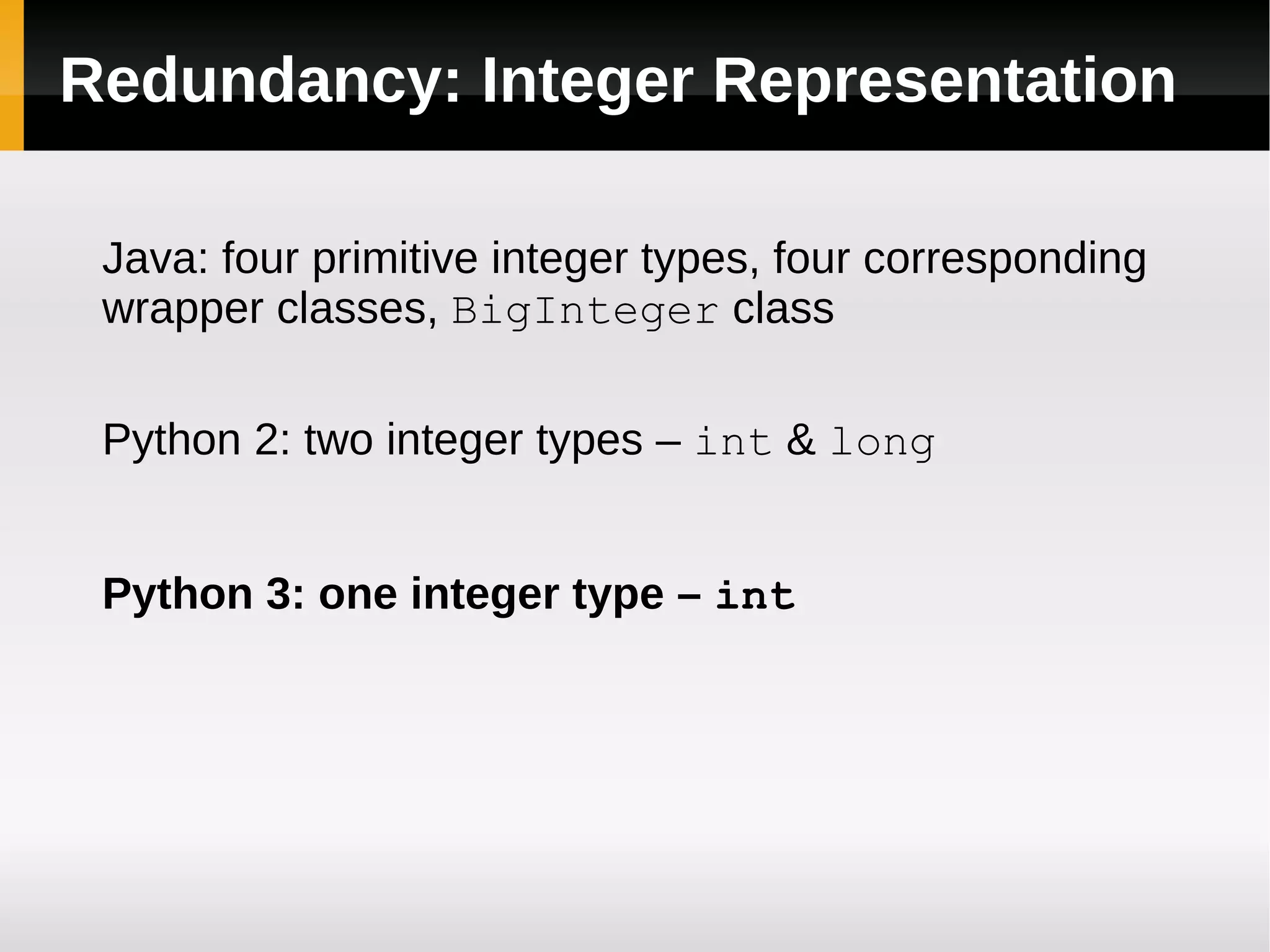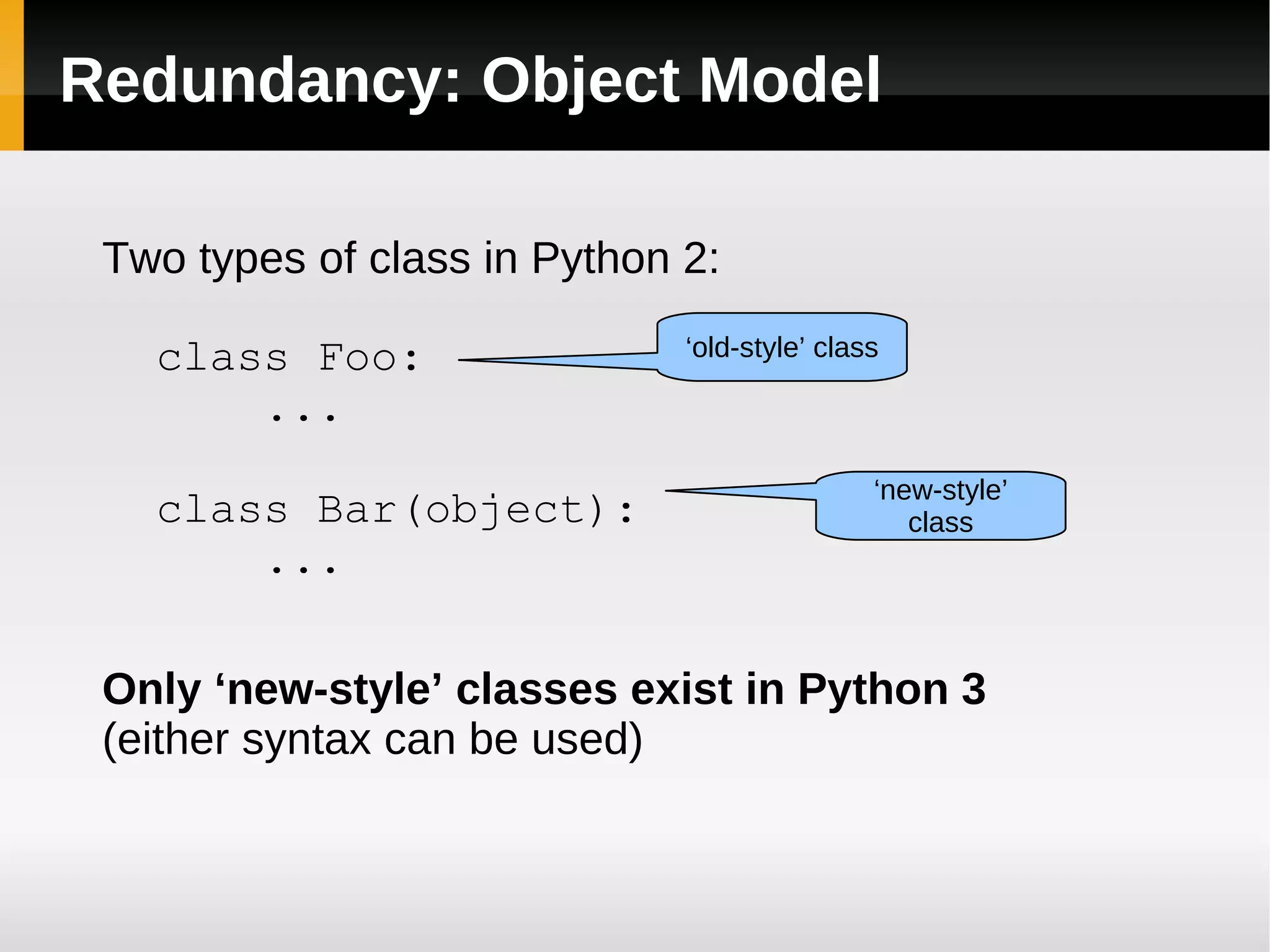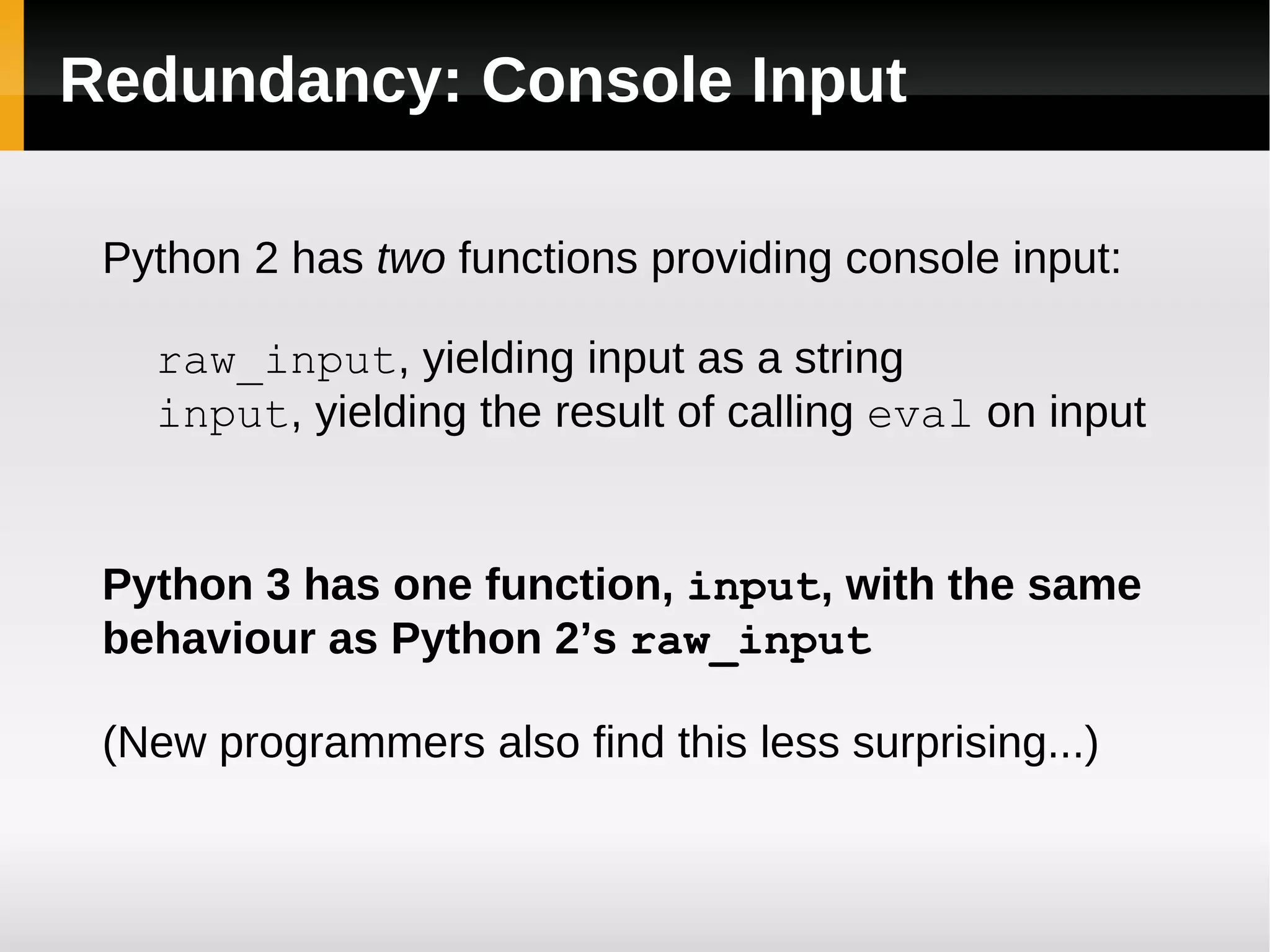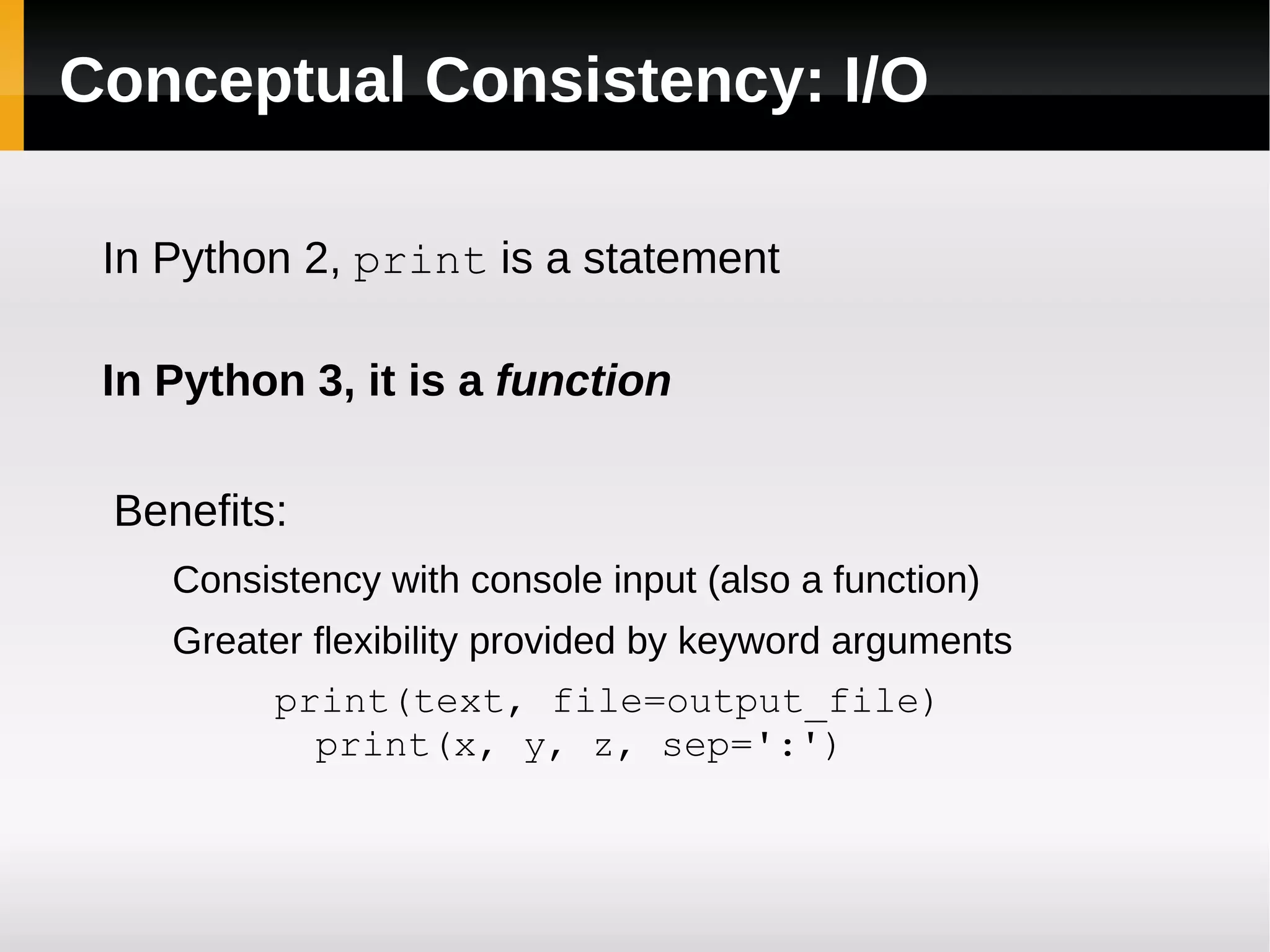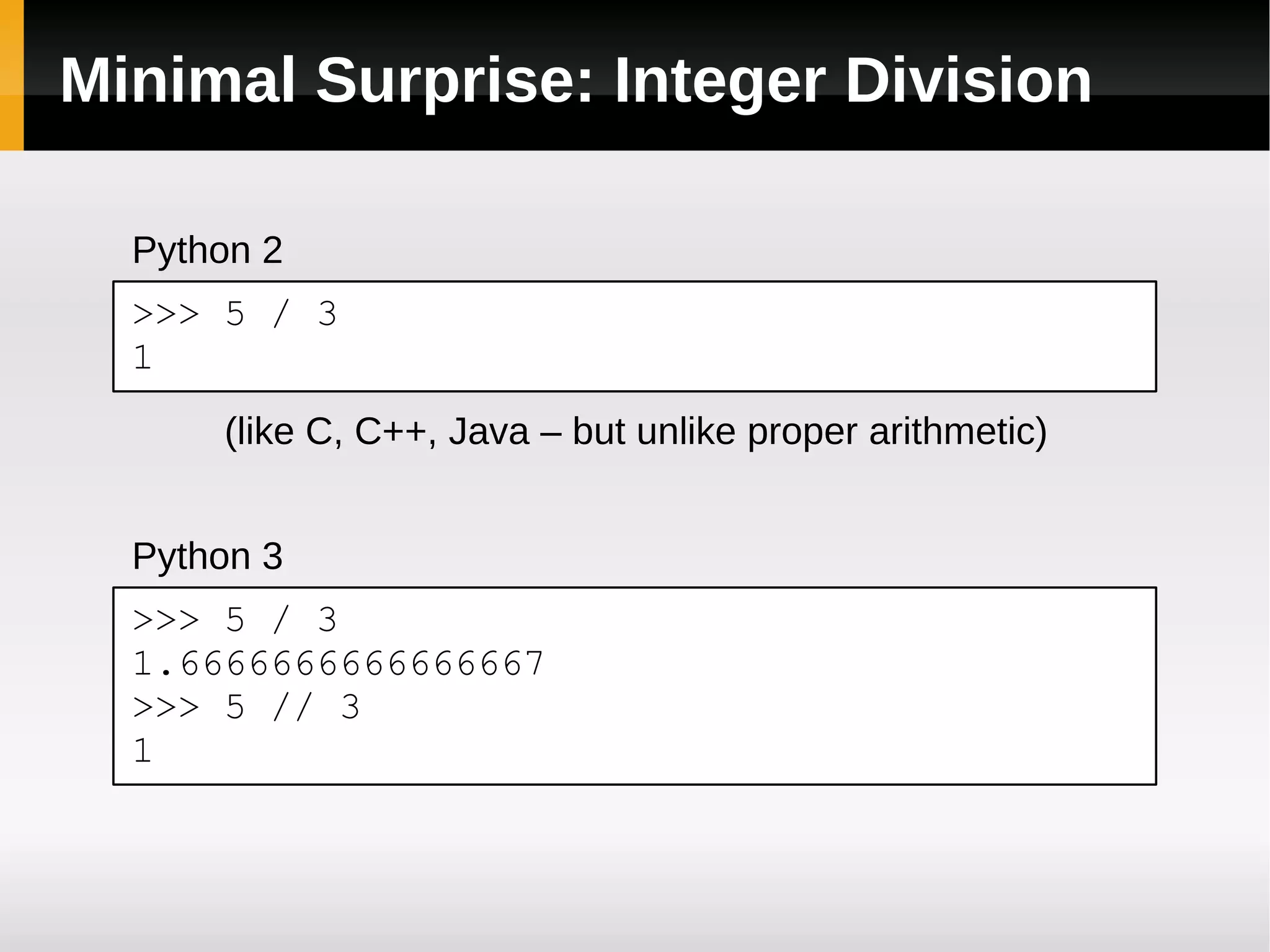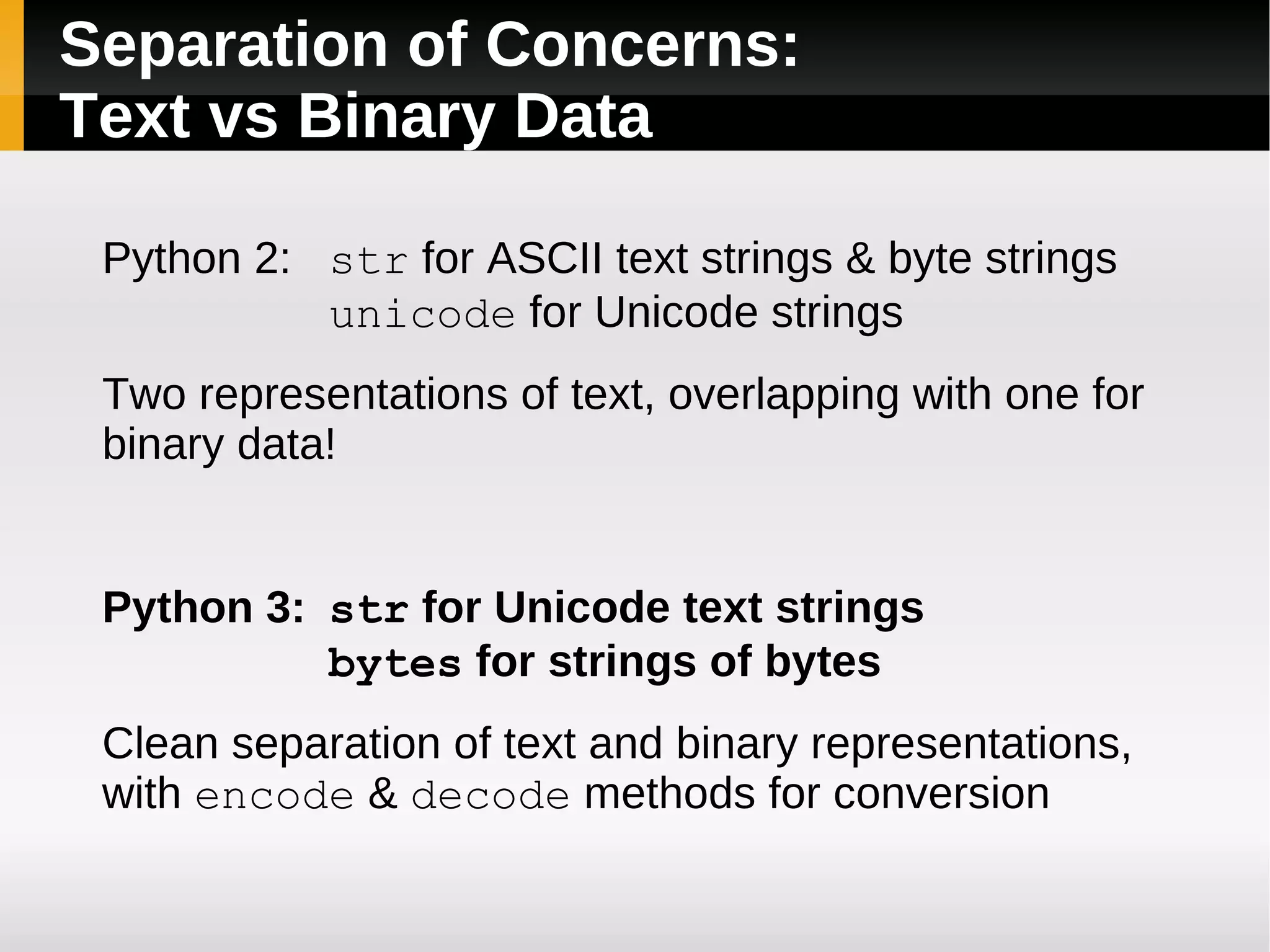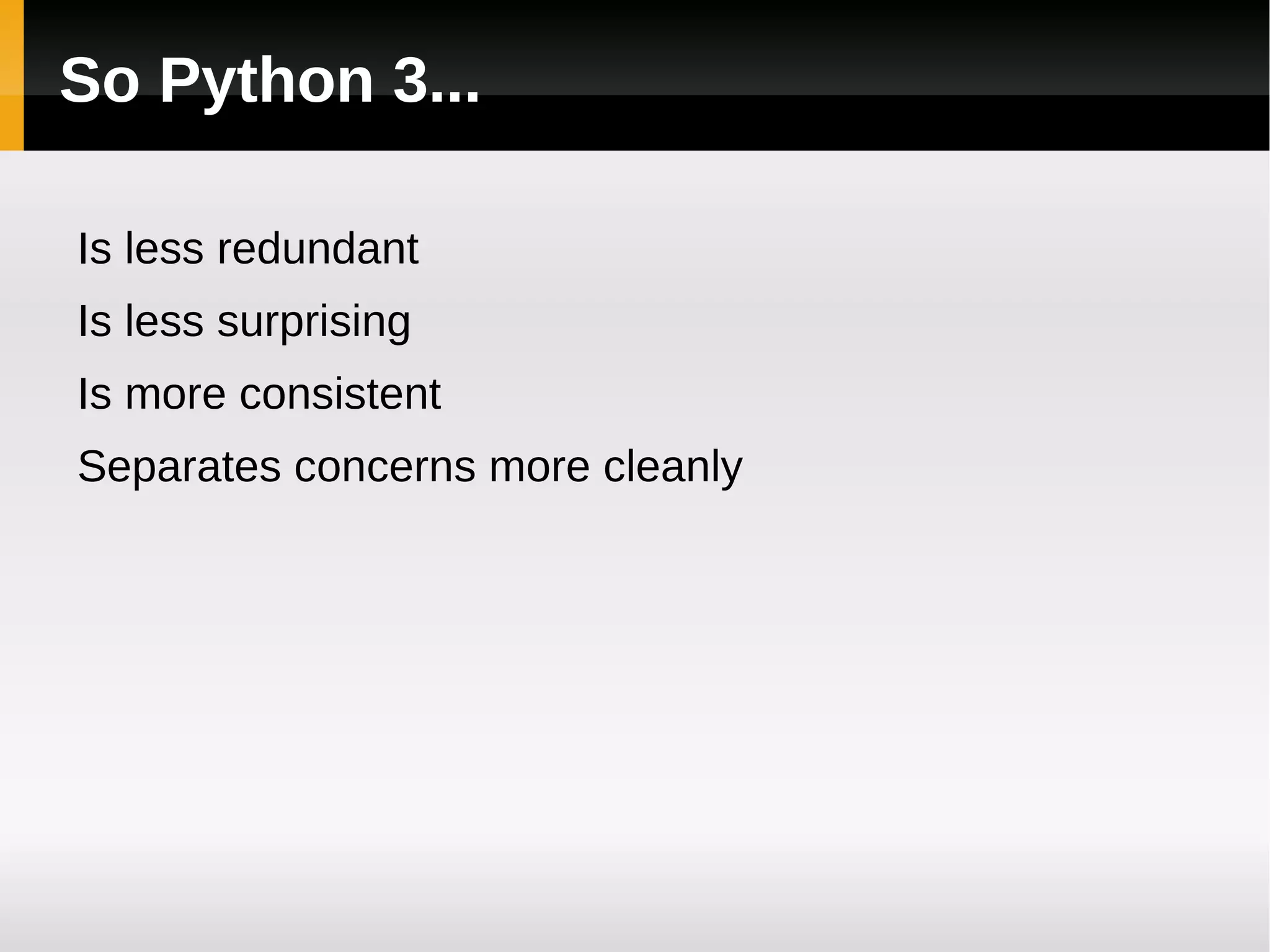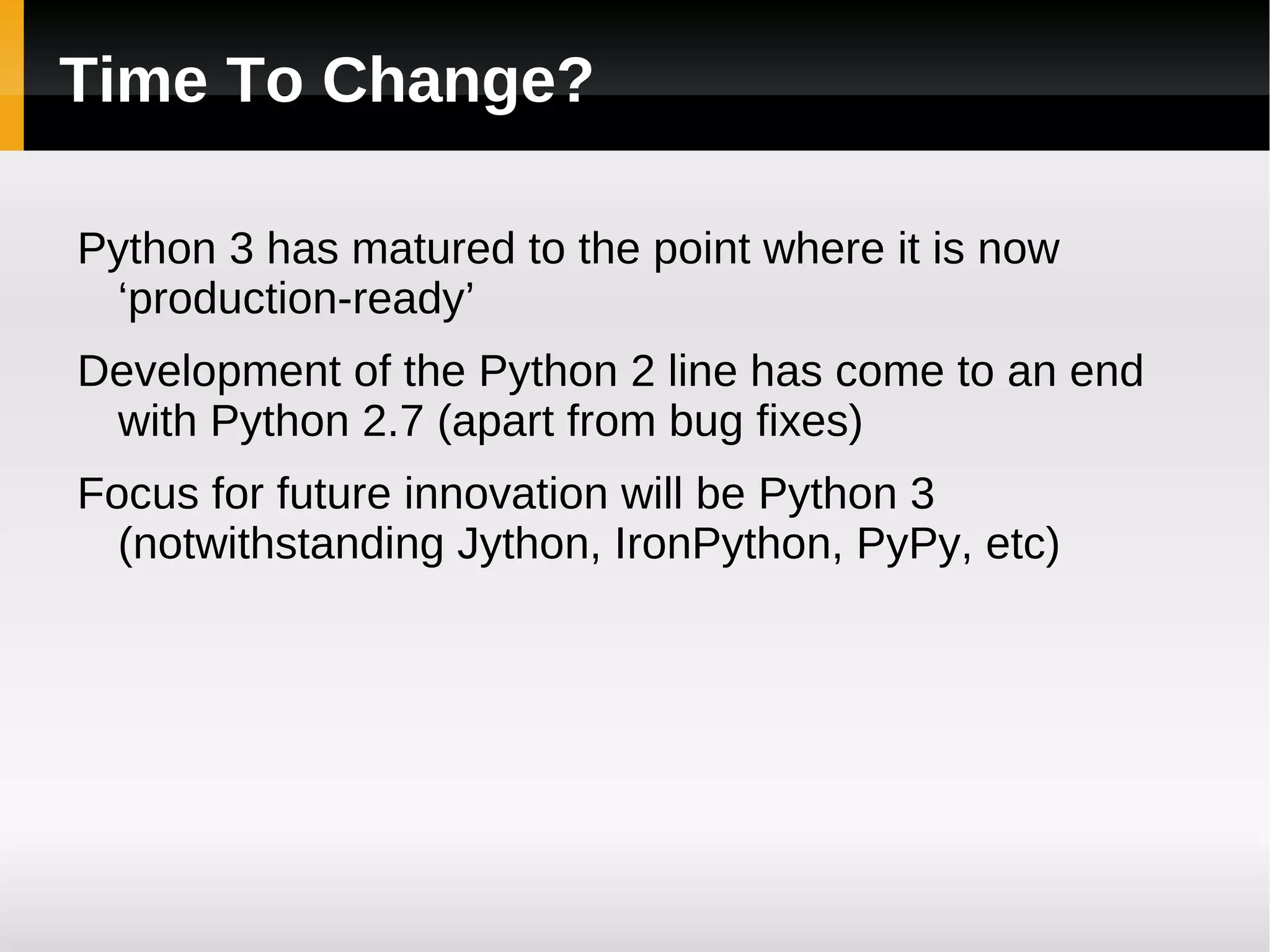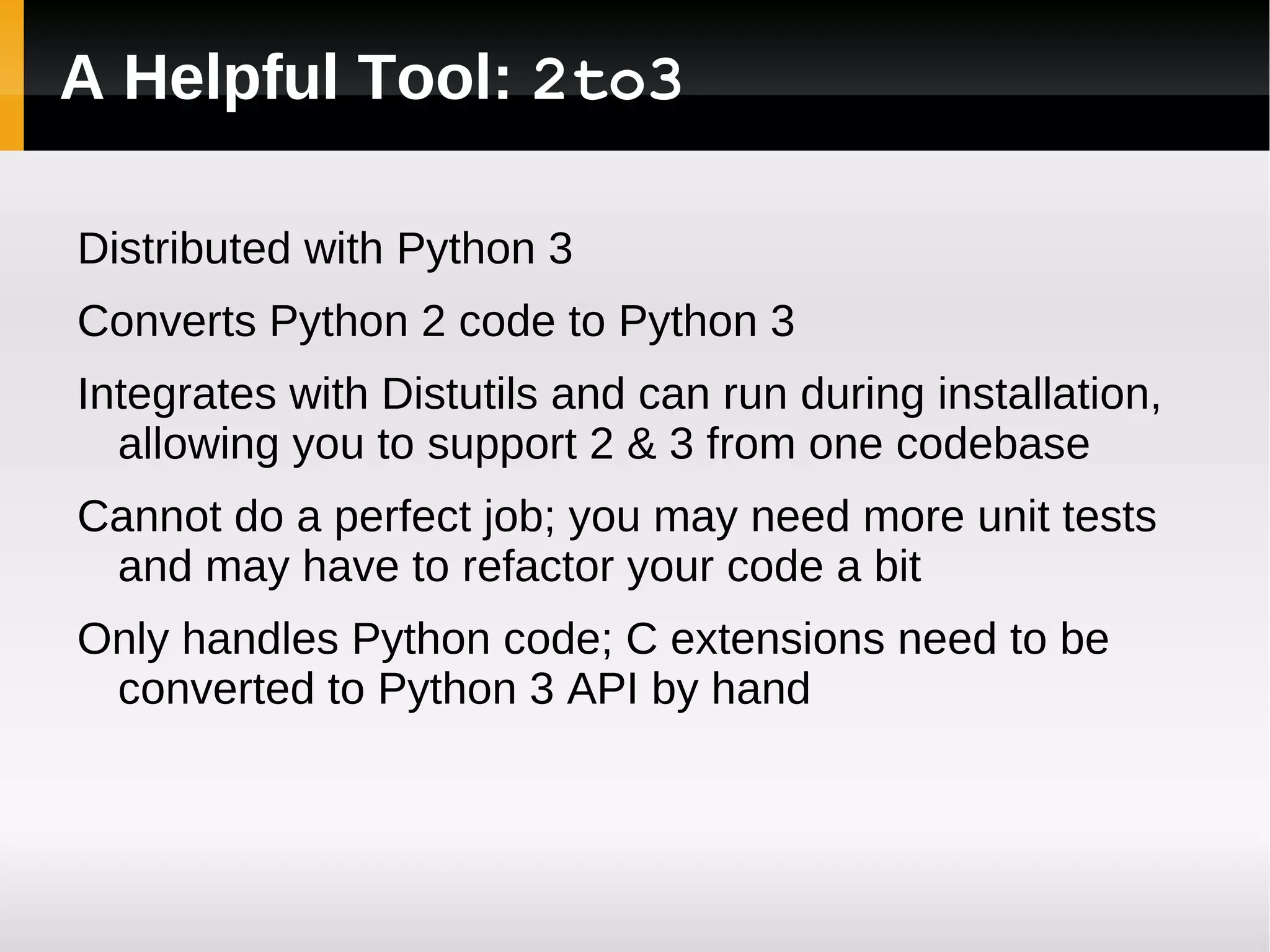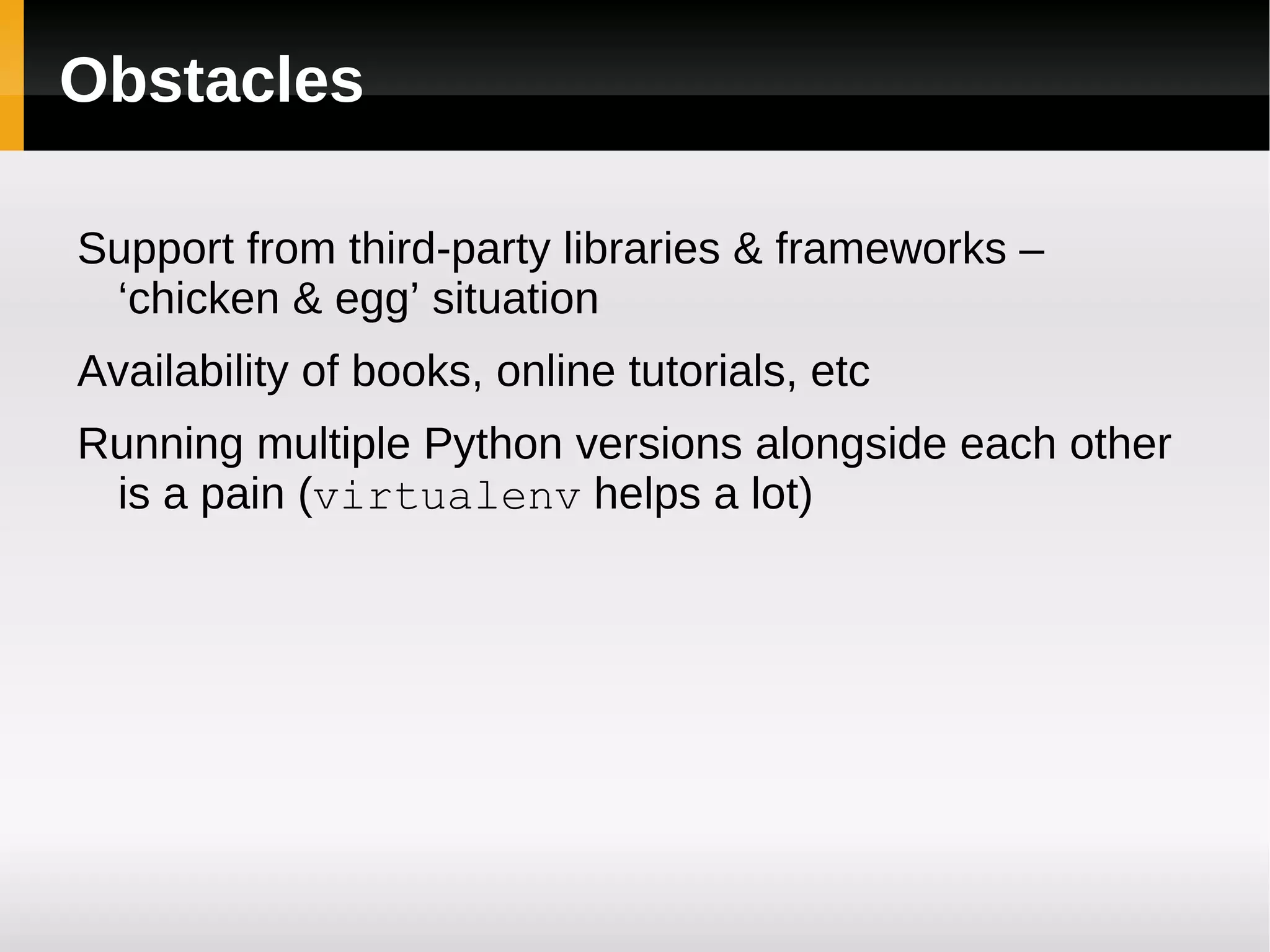The document discusses the reasons for Python's transition to Python 3 from Python 2. It argues that Python 3 is more consistent, separates concerns better, and reduces redundancy compared to Python 2. It also notes that Python 3 is now production-ready, and provides tools like 2to3 to help with the migration, though some refactoring may still be needed. Overall it makes the case that now is the time for the Python community to transition to Python 3.
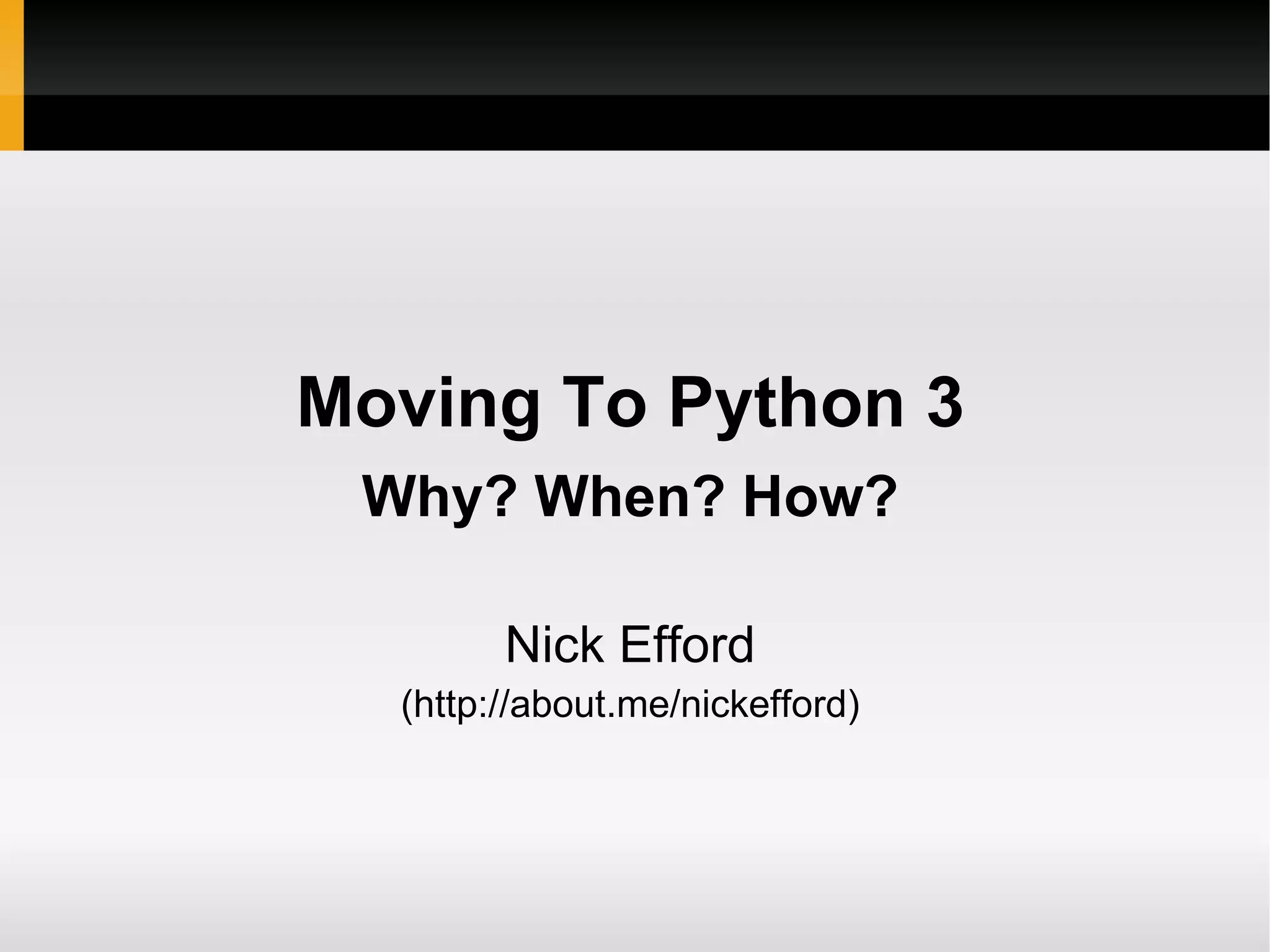
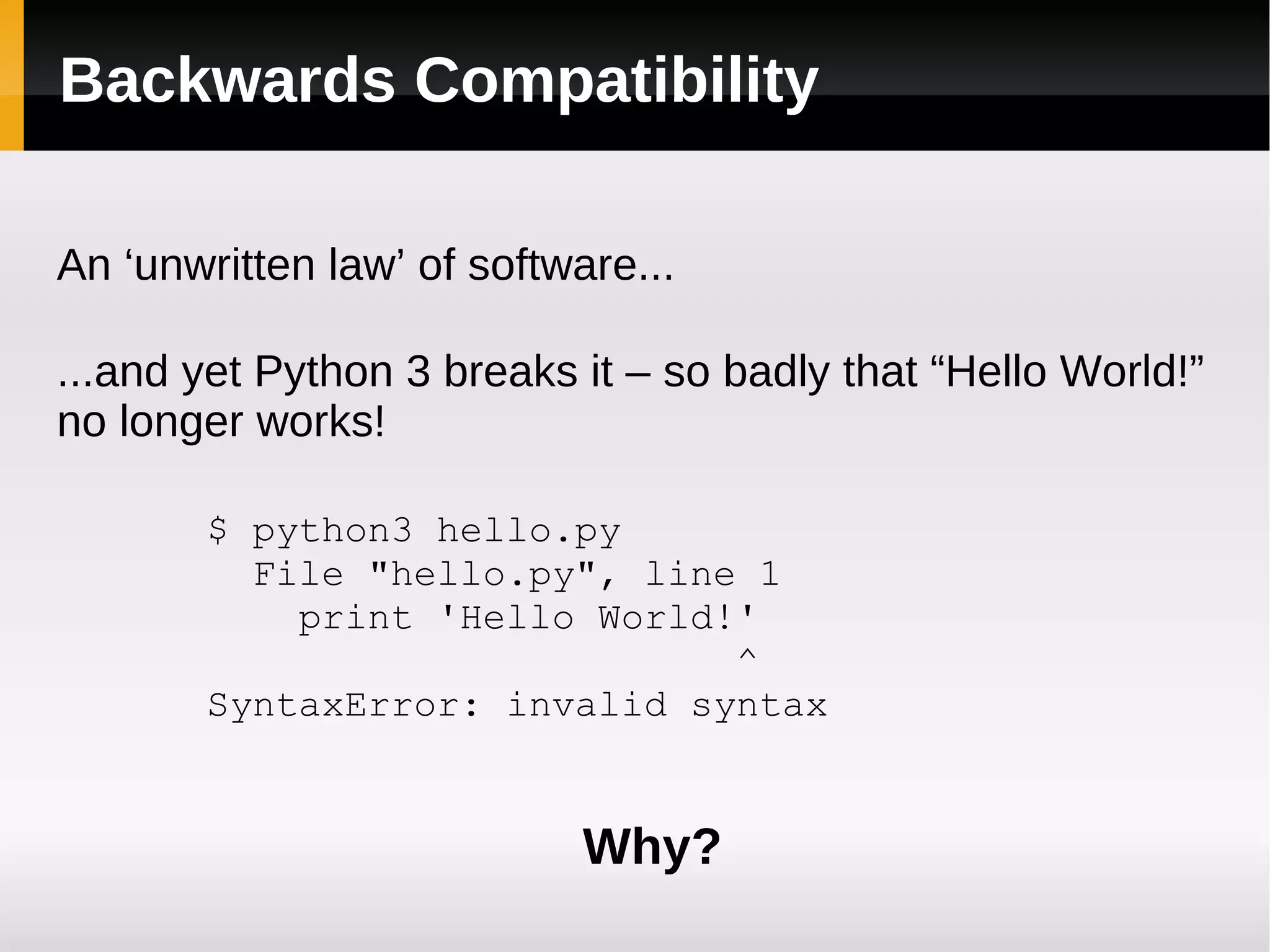
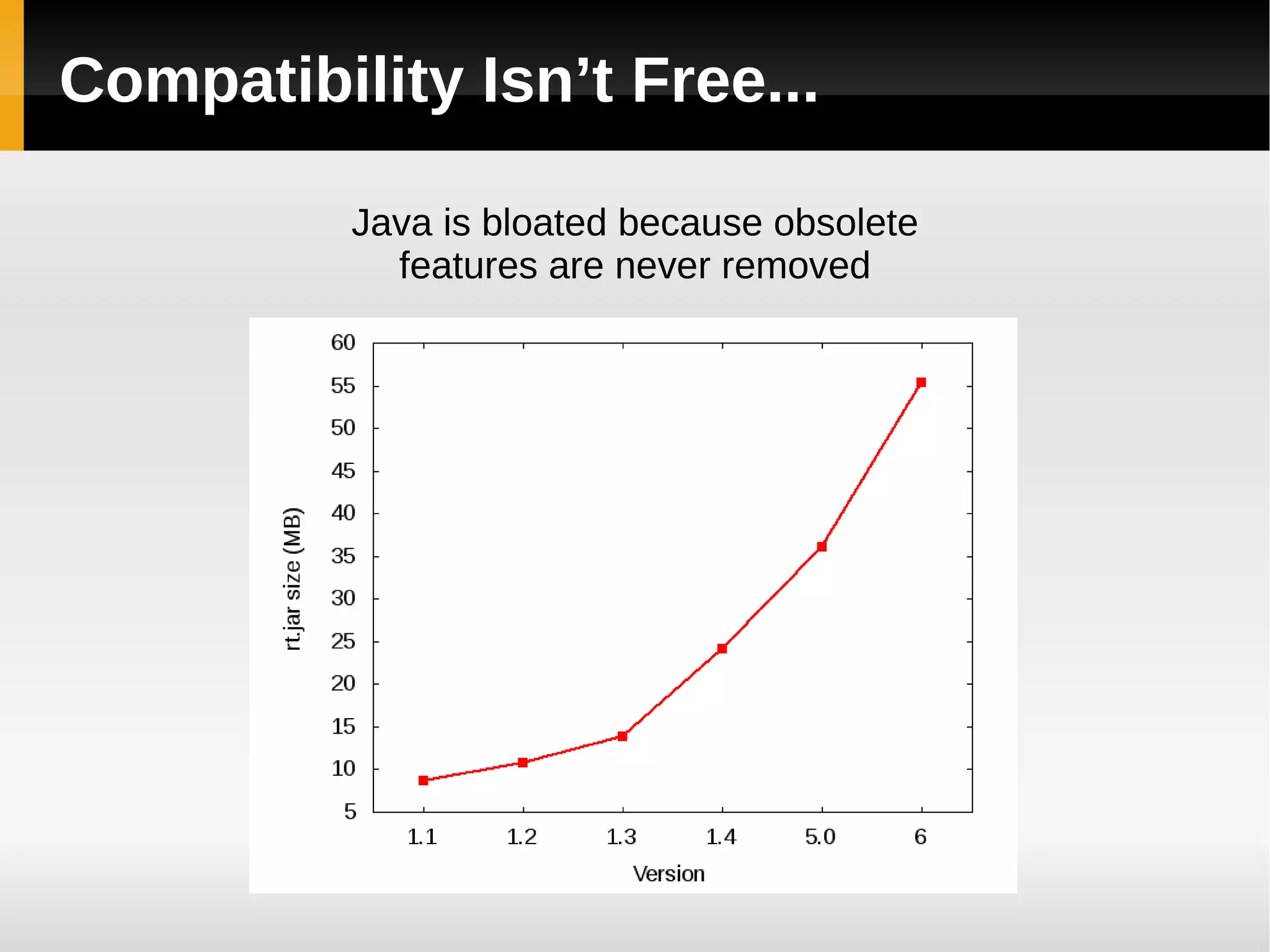

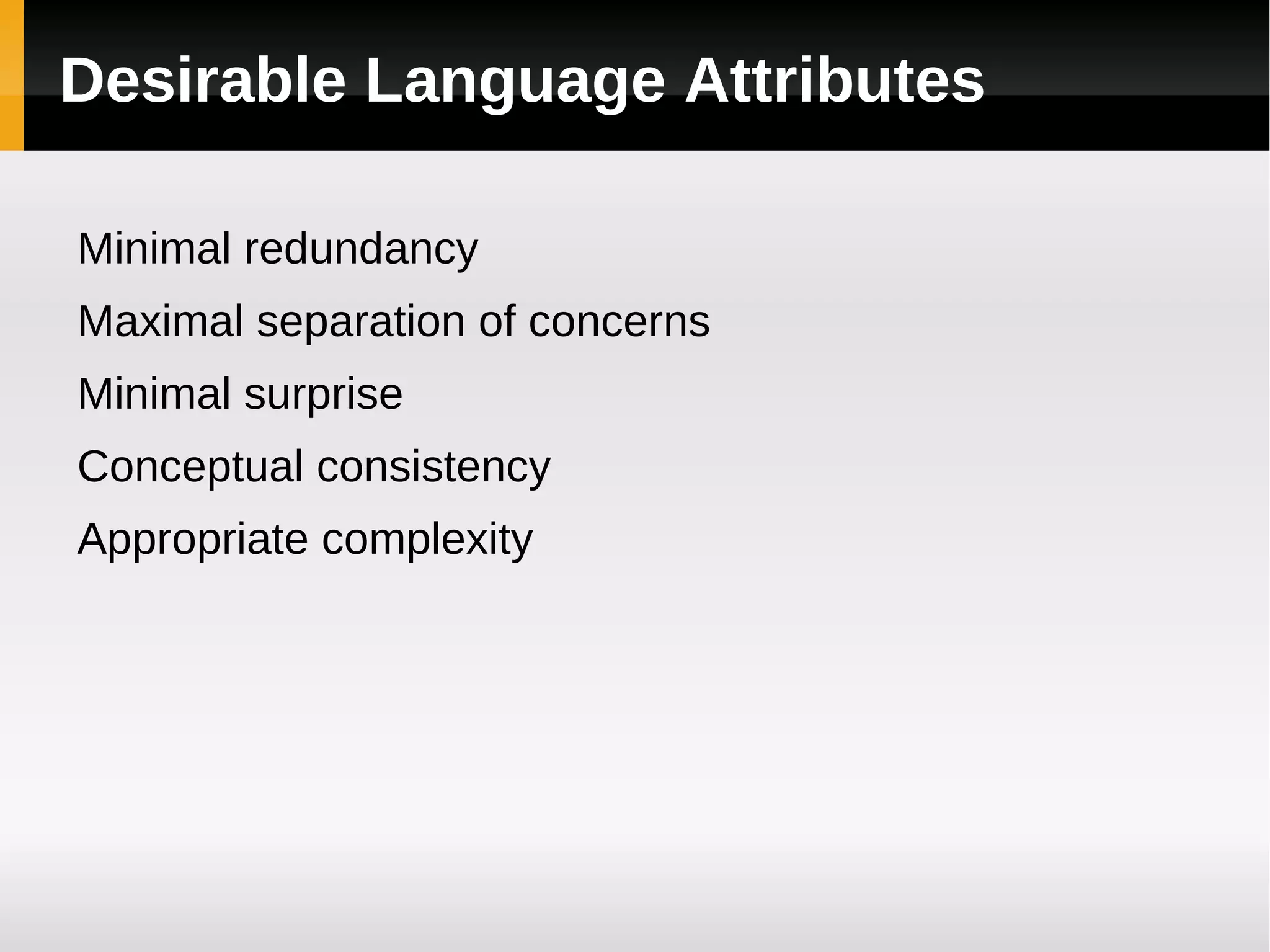
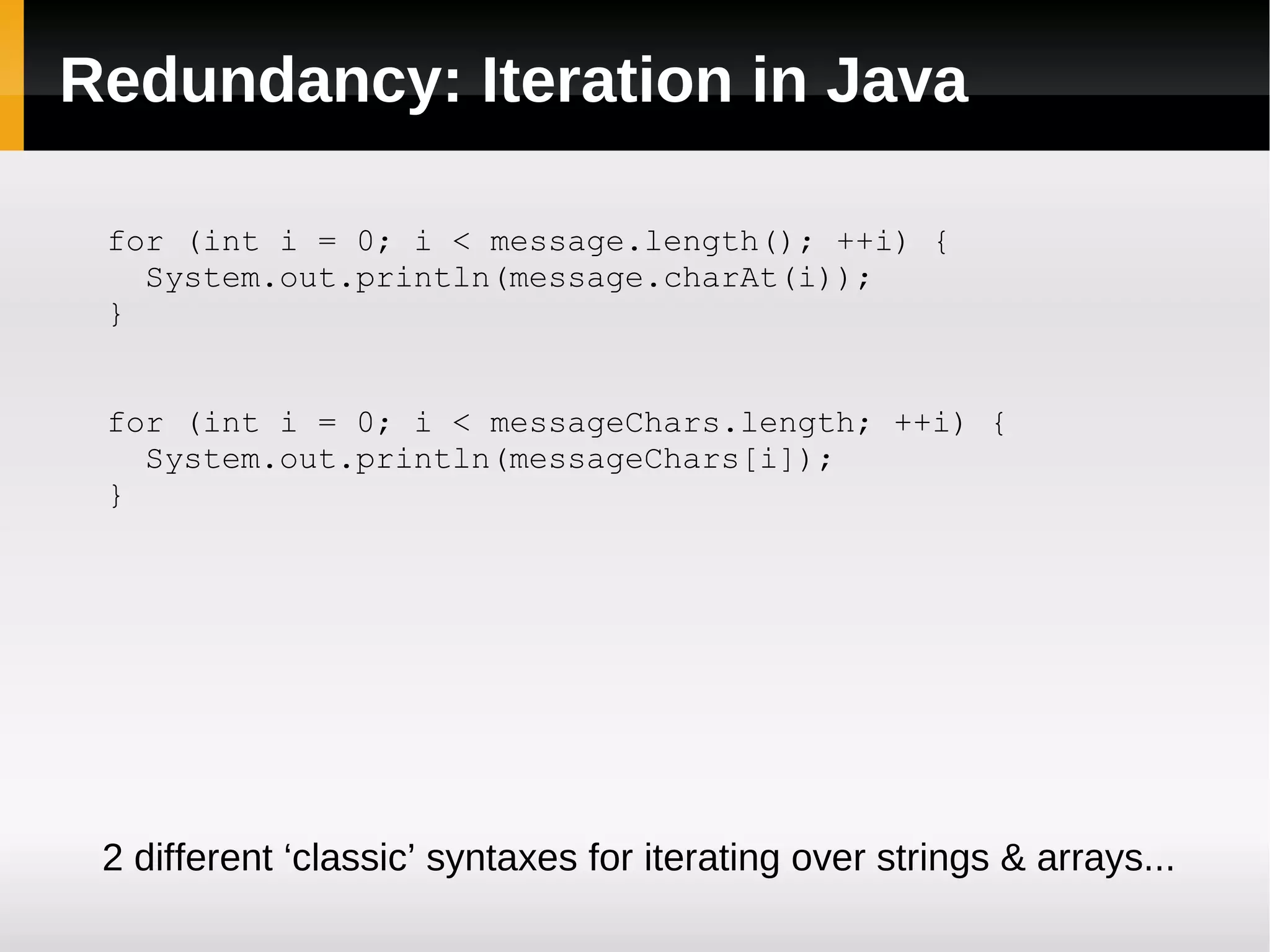
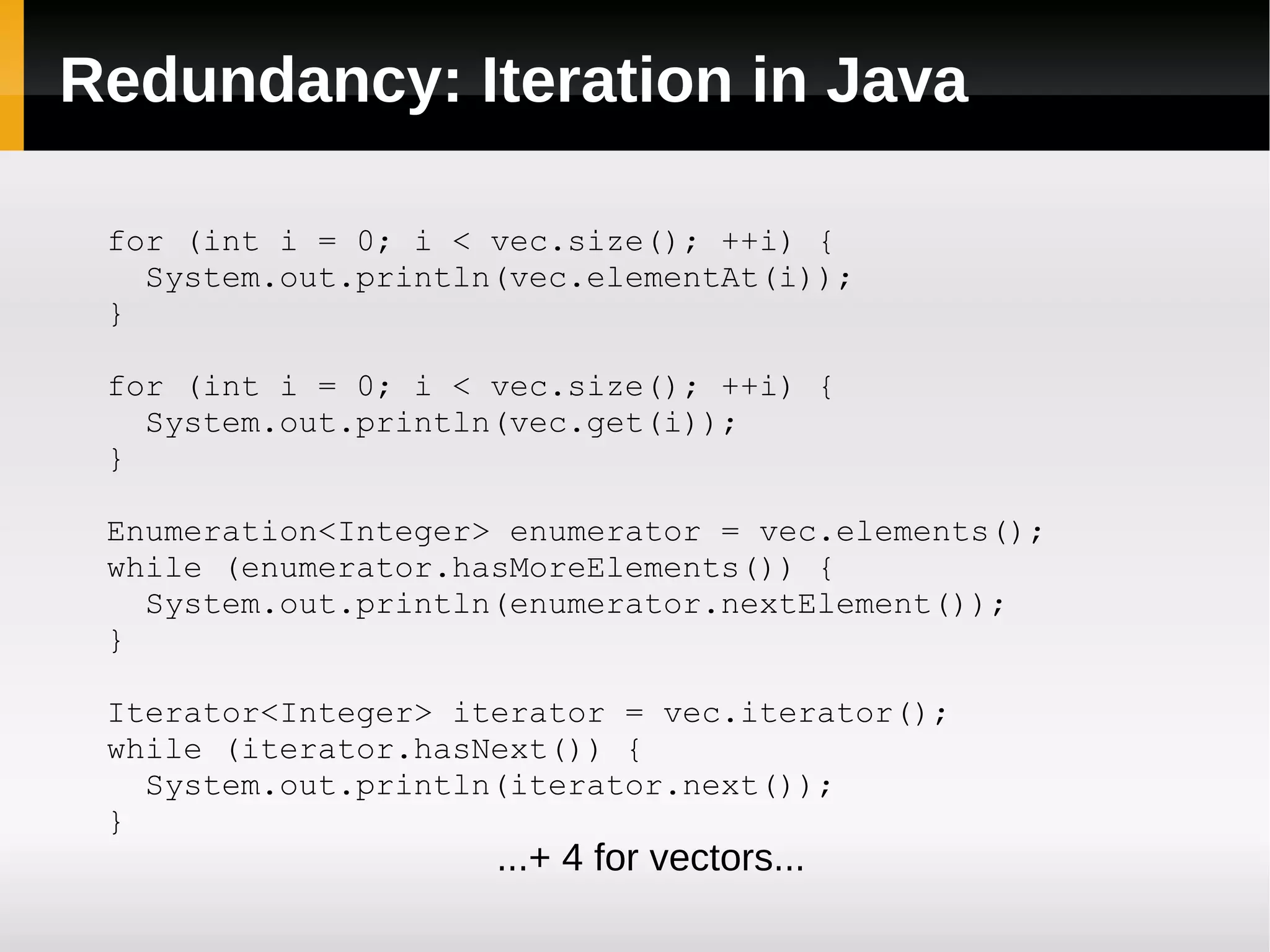
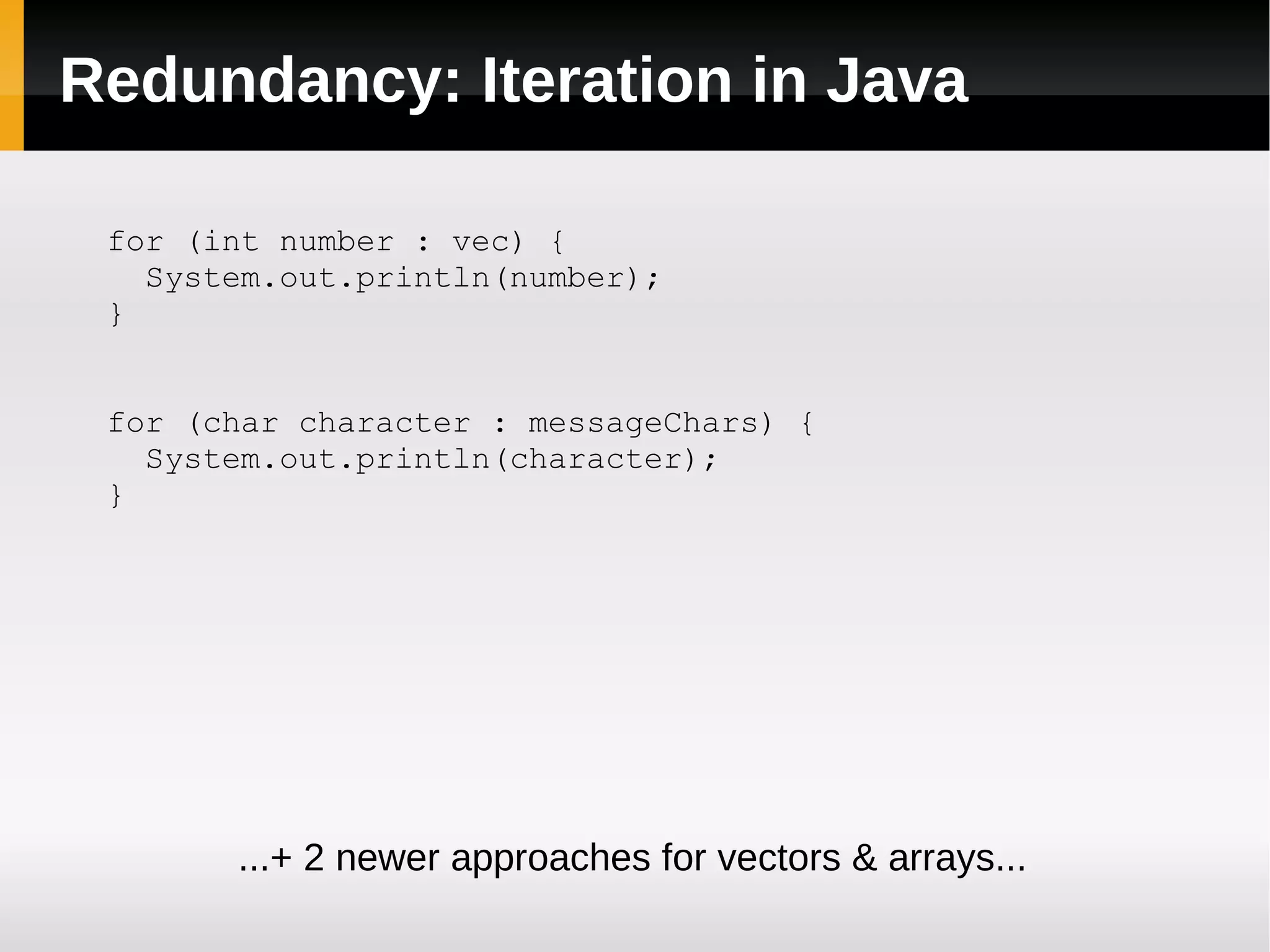
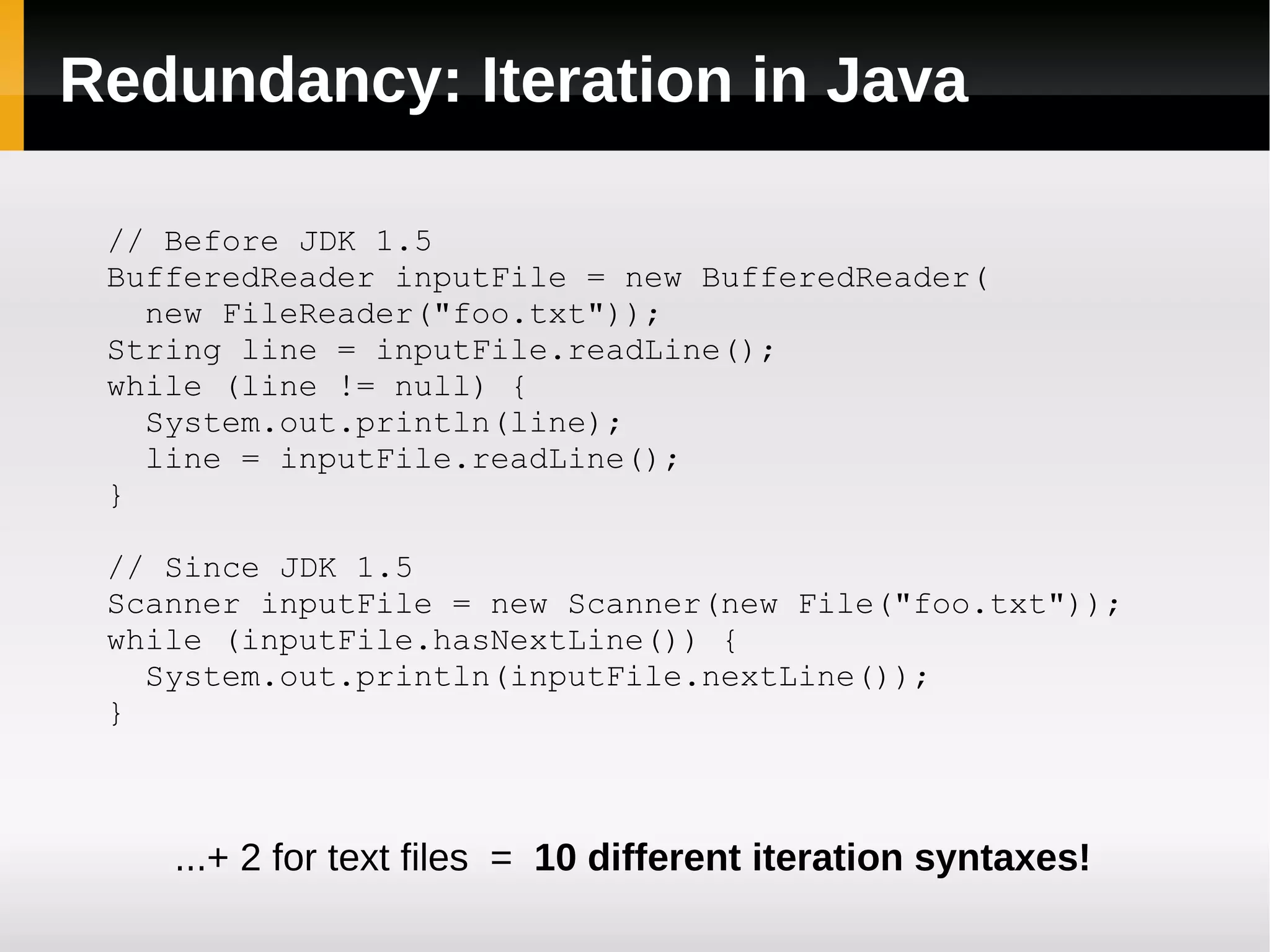
![Redundancy: Iteration in Java for (int i = 0; i < message.length(); ++i) { System.out.println(message.charAt(i)); } for (int i = 0; i < messageChars.length; ++i) { System.out.println(messageChars[i]); } 2 different ‘classic’ syntaxes for iterating over strings & arrays...](https://image.slidesharecdn.com/slides-110906105108-phpapp01/75/Moving-to-Python-3-10-2048.jpg)
